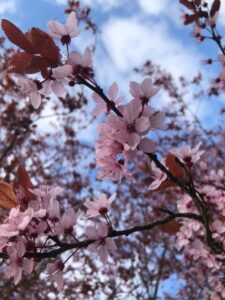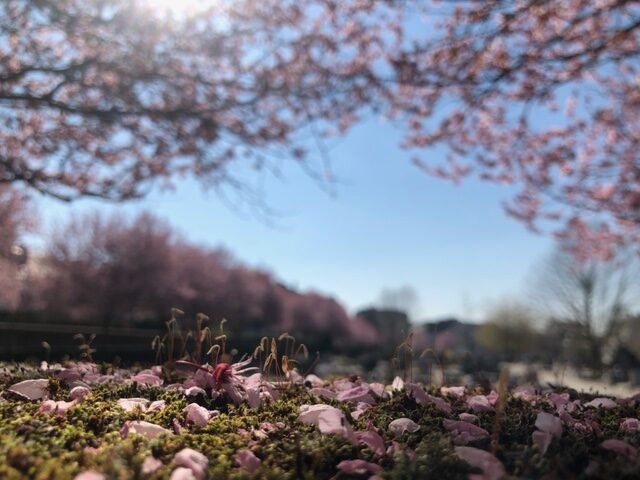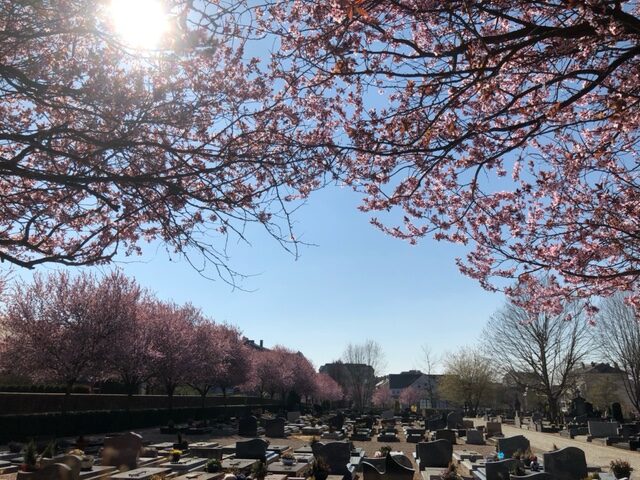The first time that I experienced the beauty of Sakura trees was in April 2017, at the Yanaka Cemetery in Tokyo. A delicate breeze dispersed thousands of pink petals over the graves, in a poetic momentum that touched me deeply. For sure, I had seen Sakura before, in my home country, but I had barely ever taken notice of them. It was the specific Japanese atmosphere of hanami that made me receptive of the transience of Nature’s beauty and the lessons that are out there, just in front of us.

Four years later, I am not in Japan, a yet inaccessible planet in pandemic times and travel bans, but in Bonnevoie, a quiet neighborhood in the southern outskirts of Luxembourg-City. My evening stroll takes me by the local graveyard, I have passed it a hundred times, but I was never actually there with all my senses present. The wuthering eastern winds play with the Sakura petals that have fallen off the trees. It is an ephemeral epilogue that reminds me of the fragility of this world, and its rapidly fading but eternally returning beauty. The smell that lies over the cemetery is not that of death but of rebirth, as if in a syncretic flash in these Easter days. Once again, I am reminded of the connections and similarities between eastern and western religions. There is a western way of living the eastern way; it might be a narrow path to an unknown north. The aligned cherry trees show me the direction; they are 71 in number, 71 lessons on eternity, enough for a lifetime spent somewhere between Luxembourg and Tokyo.


For more by Robert, see his account of a walk from Ohara to Kurama here, or his spiritual journey to Kyoto here. His account of Nicolas Bouvier in Kyoto in the mid-1950s can be read here.

